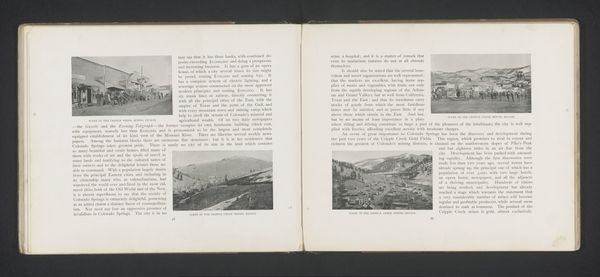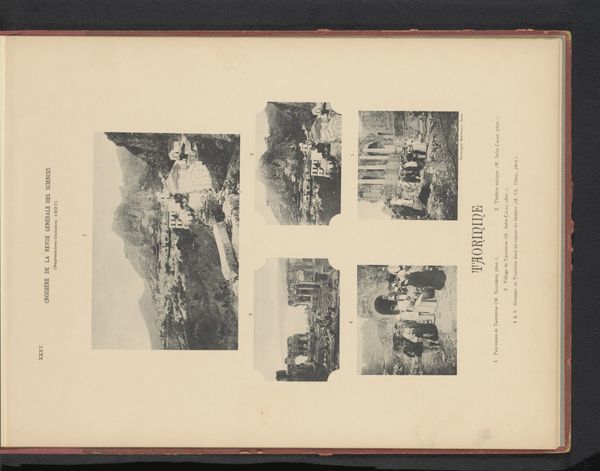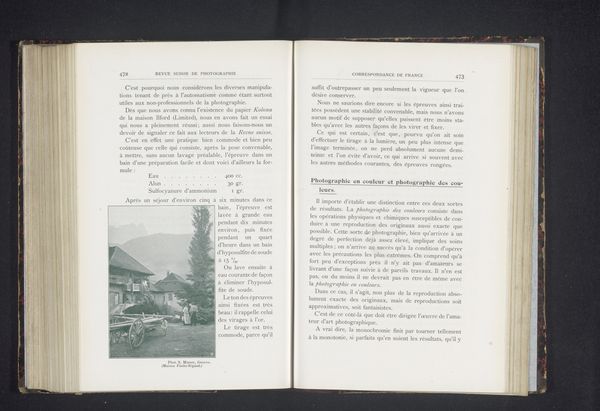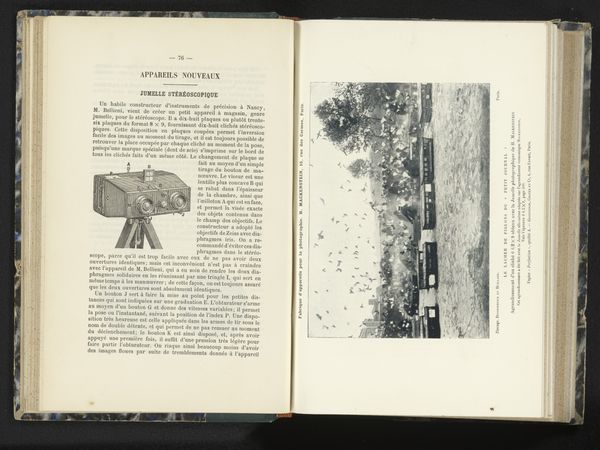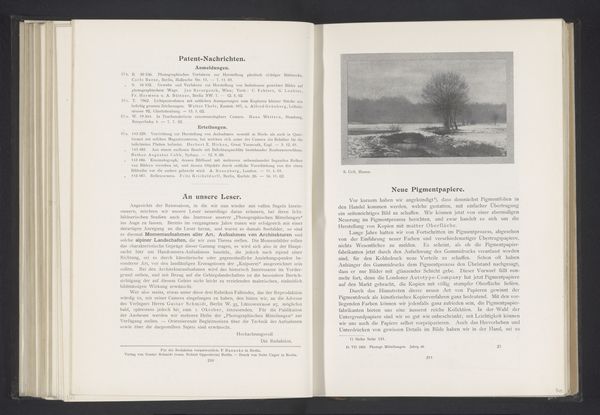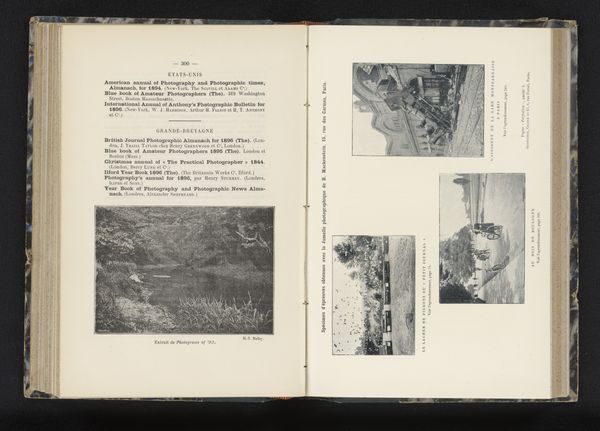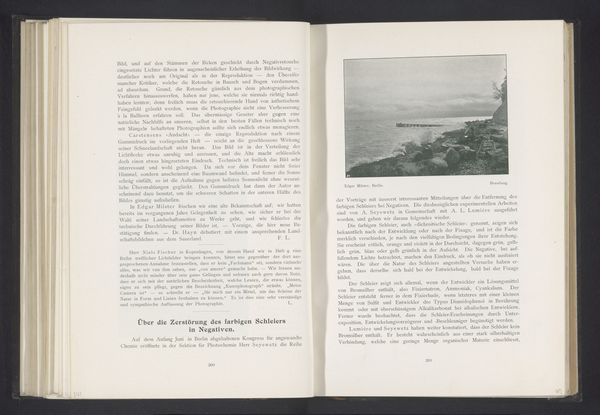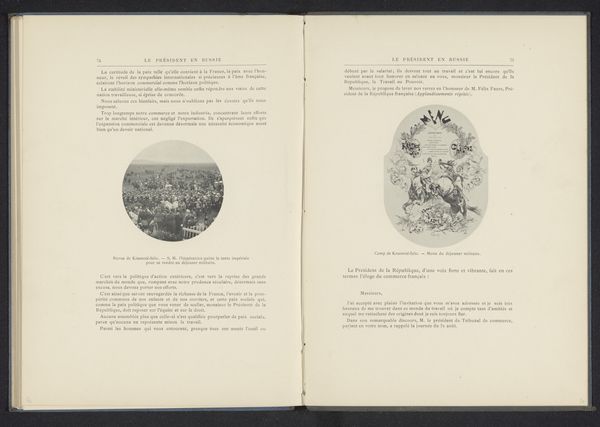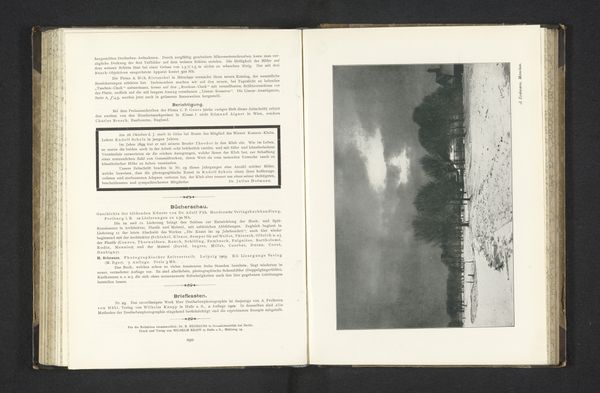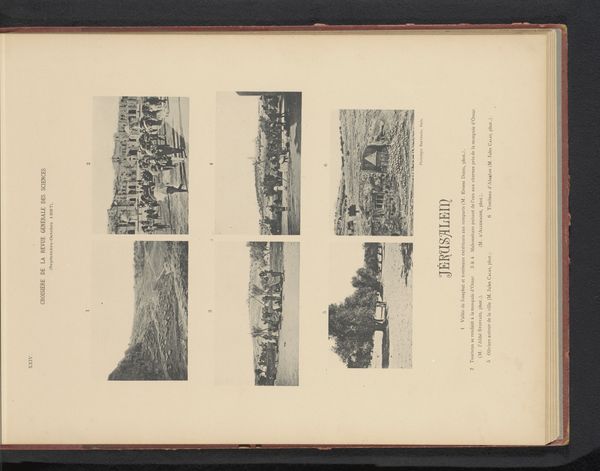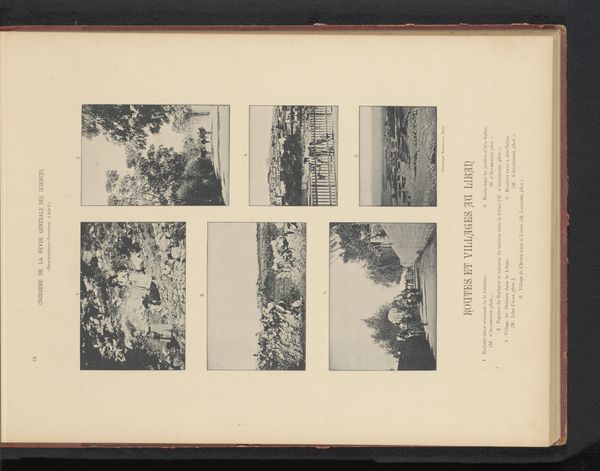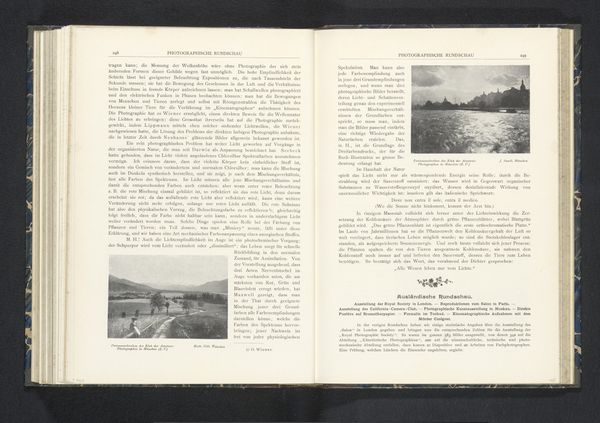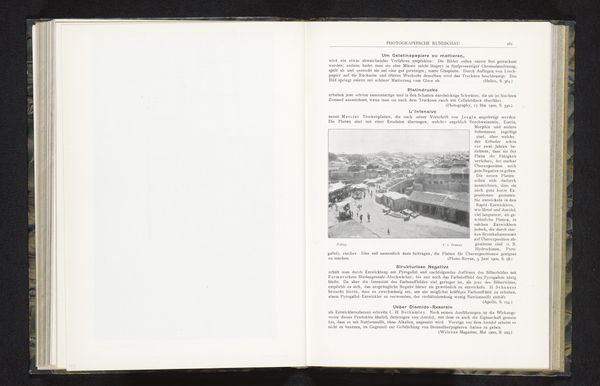
print, engraving
#
dutch-golden-age
# print
#
historical photography
#
history-painting
#
engraving
Dimensions: height 426 mm, width 338 mm
Copyright: Rijks Museum: Open Domain
Editor: This is a print titled "Nederlandsche bezittingen in Afrika - 155,000 inwoners," made around 1850 by Jan Schuitemaker. It’s a fairly detailed engraving showing a map and different scenes. I find the visual layout a bit odd, mixing a map with what appear to be picturesque views. What stands out to you? Curator: Indeed, the juxtaposition is telling. Notice how the map section is labelled “Opper Guinea,” placing it visually alongside idyllic renderings of forts and settlements. These aren’t simply landscapes; they’re visual markers of Dutch colonial power. The "155,000 inwoners" is presented as a statistic, depersonalising and quantifying the people whose land is being depicted, possessed. The landscape imagery and that single number, displayed in tandem, act as signs that need to be interpreted. Editor: So the images, though seemingly benign, are loaded with cultural baggage? Curator: Precisely. Think of the forts—Amsterdam, St. George del Mina—their very names transplanted onto African soil. These act as visual declarations, symbols of claim and control. And consider how the ‘Goudkust’, or Gold Coast, is prominently displayed on the map – suggesting both resources extracted, and a place where the Dutch exert authority. Do you recognize anything about these forms from later imagery or even contemporary forms of memory? Editor: I can see it as propaganda for Dutch youth: a blend of geography lesson and national pride, omitting the true violence of colonialism. And thinking of iconography, aren’t maps in themselves incredibly powerful symbols? Curator: Absolutely! A map defines territory, legitimizes boundaries. In this image, the combination of cartography, the seemingly objective population number, and romanticized scenery becomes a powerful tool in shaping public opinion, solidifying the perceived right to colonize. Editor: It’s a bit unsettling how effectively symbols can be used to normalize such a troubling history. I will definitely think of this in relation to other cases of landscape painting and photography as documents of their age!
Comments
No comments
Be the first to comment and join the conversation on the ultimate creative platform.
